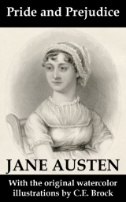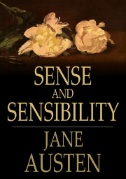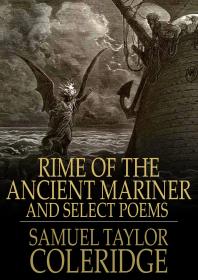 Go to A-Z Databases: Books & eBooks to search for more eBooks. Must be on campus or login with your COM account for off campus access.
Go to A-Z Databases: Books & eBooks to search for more eBooks. Must be on campus or login with your COM account for off campus access.
Want more on finding books or eBooks? Try our How to Use Books & eBooks guides.
-
 The Poems of Anna Letitia Barbauld
This volume brings together for the first time all the known poems of English writer Anna Letitia Barbauld (1743-1825), a once esteemed but long neglected figure whose career spanned the Age of Sensibility and the Romantic Era. William McCarthy and Elizabeth Kraft have collected 170 of her poems, including twenty-three previously unpublished and eleven conjectural attributions. This is the first scholarly edition of any writings of Barbauld, a brilliant woman whose interests ranged from literary criticism to history and affairs of state to children’s stories. At the end of the eighteenth century, Barbauld may well have been the most eminent living poet, male or female, in Britain. Barbauld belongs almost equally to two generations. Her verse displays an eighteenth-century adherence to balance, common sense, and poetic diction and meter, but it also celebrates the individual, the passionate, and the fanciful in a clearly Romantic manner. In the current reconfiguring of Romanticism, Barbauld provides an important contrast to the major male poets who have, until recently, defined the era--poets who clearly acknowledged her influence on their own work, yet who played a role in Barbauld’s lapse into obscurity in the century after her death. Coleridge, before a serious falling out with Barbauld, admired her greatly, and Wordsworth confessed that he wished the final eight lines of her poem "Life” had been of his own composing. Walter Savage Landor ranked her "Summer Evening’s Meditation” among the finest poems in the English language. Barbauld’s poems have retained their capacity to delight readers; they are witty, learned, imaginative, and unpredictable in both choice and treatment of subject. Read as a whole, this collection reveals a striking variety of style and voice and provides the basis for a major--and long overdue--reevaluation of Barbauld’s poetry. McCarthy and Kraft present unmodernized texts of the poems that reflect as nearly as possible the author’s final intention and give variant readings in textual notes. A lengthy introduction includes a discussion of the poems, a history of their composition and publication, and an outline of Barbauld’s life and writing career.
The Poems of Anna Letitia Barbauld
This volume brings together for the first time all the known poems of English writer Anna Letitia Barbauld (1743-1825), a once esteemed but long neglected figure whose career spanned the Age of Sensibility and the Romantic Era. William McCarthy and Elizabeth Kraft have collected 170 of her poems, including twenty-three previously unpublished and eleven conjectural attributions. This is the first scholarly edition of any writings of Barbauld, a brilliant woman whose interests ranged from literary criticism to history and affairs of state to children’s stories. At the end of the eighteenth century, Barbauld may well have been the most eminent living poet, male or female, in Britain. Barbauld belongs almost equally to two generations. Her verse displays an eighteenth-century adherence to balance, common sense, and poetic diction and meter, but it also celebrates the individual, the passionate, and the fanciful in a clearly Romantic manner. In the current reconfiguring of Romanticism, Barbauld provides an important contrast to the major male poets who have, until recently, defined the era--poets who clearly acknowledged her influence on their own work, yet who played a role in Barbauld’s lapse into obscurity in the century after her death. Coleridge, before a serious falling out with Barbauld, admired her greatly, and Wordsworth confessed that he wished the final eight lines of her poem "Life” had been of his own composing. Walter Savage Landor ranked her "Summer Evening’s Meditation” among the finest poems in the English language. Barbauld’s poems have retained their capacity to delight readers; they are witty, learned, imaginative, and unpredictable in both choice and treatment of subject. Read as a whole, this collection reveals a striking variety of style and voice and provides the basis for a major--and long overdue--reevaluation of Barbauld’s poetry. McCarthy and Kraft present unmodernized texts of the poems that reflect as nearly as possible the author’s final intention and give variant readings in textual notes. A lengthy introduction includes a discussion of the poems, a history of their composition and publication, and an outline of Barbauld’s life and writing career.
-
 Northanger Abbey
by
Jane Austen
Catherine, a seventeen year old girl, travels with her family to Bath and makes many new acquaintance, including two young men who pursue her. She is invited to visit the country estate of one, and makes the journey with high expectations of Gothic drama, her head being full of Mrs Radcliffe's The Mystery of Udolpho. This was the first novel completed by Austen, but was only published posthumously. It is a delightful, light-hearted comment by Austen on the reading and writing of novels.
Northanger Abbey
by
Jane Austen
Catherine, a seventeen year old girl, travels with her family to Bath and makes many new acquaintance, including two young men who pursue her. She is invited to visit the country estate of one, and makes the journey with high expectations of Gothic drama, her head being full of Mrs Radcliffe's The Mystery of Udolpho. This was the first novel completed by Austen, but was only published posthumously. It is a delightful, light-hearted comment by Austen on the reading and writing of novels.
-
 Pride and Prejudice
by
Jane Austen
Mr and Mrs Bennet have five unmarried daughters. When the amiable Mr Bingly moves into the neighbourhood, Mrs Bennet therefore feels entirely sure that he is meant for one of her girls. Her eldest Miss Bennet captures his attention, but Mr Bingley's proud friend Mr Darcy does not approve the match and takes his friend away to London. Though not before losing his own heart to the second eldest, Lizzie. With an indolent father on one side and a nervous, ignorant mother on the other, the girls soon find themselves in the middle of a disaster which throws them back in with the two gentlemen. All parties must re-think their pride and the prejudice of first impressions. Pride and Prejudice is Jane Austen's most famous novel.
Pride and Prejudice
by
Jane Austen
Mr and Mrs Bennet have five unmarried daughters. When the amiable Mr Bingly moves into the neighbourhood, Mrs Bennet therefore feels entirely sure that he is meant for one of her girls. Her eldest Miss Bennet captures his attention, but Mr Bingley's proud friend Mr Darcy does not approve the match and takes his friend away to London. Though not before losing his own heart to the second eldest, Lizzie. With an indolent father on one side and a nervous, ignorant mother on the other, the girls soon find themselves in the middle of a disaster which throws them back in with the two gentlemen. All parties must re-think their pride and the prejudice of first impressions. Pride and Prejudice is Jane Austen's most famous novel.
-
 Sense and Sensibility
by
Jane Austen
When Mr. Dashwood dies, he leaves his second wife and her three daughters at the mercy of his son and heir, John. John's wife convinces him to turn his step-mother and half-sisters out, and they move to a country cottage, rented to them by a distant relative. In their newly reduced circumstances Elinor and Marianne, the two eldest daughters, wrestle with ideas of romance and reality and their apparent opposition to each other. Elinor struggles in silent propriety, while Marianne is as violently romantic as her ideals. Life, however, teaches the girls to balance sense and sensibility in their approach to love and marriage. Sense and Sensibility was Jane Austen's first novel to be published, in 1811.
Sense and Sensibility
by
Jane Austen
When Mr. Dashwood dies, he leaves his second wife and her three daughters at the mercy of his son and heir, John. John's wife convinces him to turn his step-mother and half-sisters out, and they move to a country cottage, rented to them by a distant relative. In their newly reduced circumstances Elinor and Marianne, the two eldest daughters, wrestle with ideas of romance and reality and their apparent opposition to each other. Elinor struggles in silent propriety, while Marianne is as violently romantic as her ideals. Life, however, teaches the girls to balance sense and sensibility in their approach to love and marriage. Sense and Sensibility was Jane Austen's first novel to be published, in 1811.
-
 Complete Poems
by
John Keats
Already with thee! tender is the night, And haply the Queen-Moon is on her throne, Cluster'd around by all her starry Fays; But here there is no light, Save what from heaven is with the breezes blown Through verdurous glooms and winding mossy ways. Despite his tragically short life, John Keats, a self-confessed "rebel Angel", endures for many as a personification of the Romantic age. While contemporary critics mocked him as a "Cockney poet" and an uneducated lower-class "apothecary" who aspired to poetry, subsequent generations began to see and appreciate both the rich and impassioned sensuousness and the love of beauty and liberty that pervade his work. From Endymion and Hyperion to 'The Eve of St Agnes', 'La Belle Dame sans Merci' and the Odes, this collection, which presents Keats's oeuvre in chronological order, displays his rapid poetic growth, the development of his philosophical and spiritual beliefs and the voluptuous, silken nature of his verse.
Complete Poems
by
John Keats
Already with thee! tender is the night, And haply the Queen-Moon is on her throne, Cluster'd around by all her starry Fays; But here there is no light, Save what from heaven is with the breezes blown Through verdurous glooms and winding mossy ways. Despite his tragically short life, John Keats, a self-confessed "rebel Angel", endures for many as a personification of the Romantic age. While contemporary critics mocked him as a "Cockney poet" and an uneducated lower-class "apothecary" who aspired to poetry, subsequent generations began to see and appreciate both the rich and impassioned sensuousness and the love of beauty and liberty that pervade his work. From Endymion and Hyperion to 'The Eve of St Agnes', 'La Belle Dame sans Merci' and the Odes, this collection, which presents Keats's oeuvre in chronological order, displays his rapid poetic growth, the development of his philosophical and spiritual beliefs and the voluptuous, silken nature of his verse.
-
 Don Juan
by
Lord Byron
In his satiric poem Don Juan, Lord Byron refigures the legend as a man easily seduced by women, rather than as a dangerous womanizer. When the first two cantos were anonymously published in 1819, they were criticized for being immoral. They were also immensely popular. Byron only completed 16 cantos, leaving the 17th unwritten when he died in 1824. Don Juan is commonly considered to be his masterpiece.
Don Juan
by
Lord Byron
In his satiric poem Don Juan, Lord Byron refigures the legend as a man easily seduced by women, rather than as a dangerous womanizer. When the first two cantos were anonymously published in 1819, they were criticized for being immoral. They were also immensely popular. Byron only completed 16 cantos, leaving the 17th unwritten when he died in 1824. Don Juan is commonly considered to be his masterpiece.
-
 Frankenstein
by
Mary Wollstonecraft Shelley
Frankenstein or The Modern Prometheus, was completed by Mary Shelley at the age of 19. She infused this original novel with Gothic and Romantic elements. Scientist Victor Frankenstein creates a large and powerful creature in the likeness of man, but is disgusted by his own creation and he abandons the being to fend for itself. Spawning generations of horror stories in the genre, Frankenstein is a gruesome warning against playing God and attempting the engineering of life.
Frankenstein
by
Mary Wollstonecraft Shelley
Frankenstein or The Modern Prometheus, was completed by Mary Shelley at the age of 19. She infused this original novel with Gothic and Romantic elements. Scientist Victor Frankenstein creates a large and powerful creature in the likeness of man, but is disgusted by his own creation and he abandons the being to fend for itself. Spawning generations of horror stories in the genre, Frankenstein is a gruesome warning against playing God and attempting the engineering of life.
-
-
 Poems and Songs
by
Robert Burns
Robert Burns (1759 - 1796) called himself "an Aeolian harp strung to every wind of heaven." His first volume of poems, entitled Poems, Chiefly in the Scottish Dialect, was published in 1786. An immediate success, it established Burns's poetic reputation, which has grown over two centuries to the point where he is not only the Scottish national poet but the object of a cult unique in British poetry. The present volume contains 43 of his finest poems and songs, reprinted unabridged from an authoritative tenth-century edition. Included are "The Twa Dogs," a deft satire of the Scottish upper classes; "To a Mouse," one of the poet's best known, most charming works; "Address to the Unco Guid," an attack on Puritan hypocrisy; "Holy Willie's Prayer," one of the great verse-satires of all times; as well as such favorites as "The Cotter's Saturday Night," "To a Mountain Daisy," "The Holy Fair," "Address to the Deil," "The Death and Dying Words of Poor Mailie," and many more. In addition to his poetic undertakings, Burns almost single-handedly preserved and revived the traditional Scottish song, and this volume includes a rich selection of these works: "A Red, Red Rose," "Auld Lang Syne," "Comin' thro' the Rye," "My Heart's in the Highlands," "My Love, She's But a Lassie Yet," and a host of others.
Poems and Songs
by
Robert Burns
Robert Burns (1759 - 1796) called himself "an Aeolian harp strung to every wind of heaven." His first volume of poems, entitled Poems, Chiefly in the Scottish Dialect, was published in 1786. An immediate success, it established Burns's poetic reputation, which has grown over two centuries to the point where he is not only the Scottish national poet but the object of a cult unique in British poetry. The present volume contains 43 of his finest poems and songs, reprinted unabridged from an authoritative tenth-century edition. Included are "The Twa Dogs," a deft satire of the Scottish upper classes; "To a Mouse," one of the poet's best known, most charming works; "Address to the Unco Guid," an attack on Puritan hypocrisy; "Holy Willie's Prayer," one of the great verse-satires of all times; as well as such favorites as "The Cotter's Saturday Night," "To a Mountain Daisy," "The Holy Fair," "Address to the Deil," "The Death and Dying Words of Poor Mailie," and many more. In addition to his poetic undertakings, Burns almost single-handedly preserved and revived the traditional Scottish song, and this volume includes a rich selection of these works: "A Red, Red Rose," "Auld Lang Syne," "Comin' thro' the Rye," "My Heart's in the Highlands," "My Love, She's But a Lassie Yet," and a host of others.
-
 Rime of the Ancient Mariner
by
Samuel Taylor Coleridge
A mariner stops a man on his way to a wedding. The mariner then relates to the man all the events of a long sea voyage, arousing in his listener feeling of impatience, fear, fascination and bemusement. The Rime of the Ancient Mariner was published in the collection Lyrical Ballads (1798), which contributed significantly to the advent of modern poetry and the beginnings of British Romance literature.
Rime of the Ancient Mariner
by
Samuel Taylor Coleridge
A mariner stops a man on his way to a wedding. The mariner then relates to the man all the events of a long sea voyage, arousing in his listener feeling of impatience, fear, fascination and bemusement. The Rime of the Ancient Mariner was published in the collection Lyrical Ballads (1798), which contributed significantly to the advent of modern poetry and the beginnings of British Romance literature.
-
 The Poems of William Wordsworth
by
William Wordsworth
The three-volume edition of Wordsworth's poems is the most comprehensive edition now in print and contains reading texts chosen from the 21 volumes of the Cornell Wordsworth. It is without a doubt the most pleasurable way to read Wordsworth's poems in their entirety. Volume 2 includes the thirteen-book Prelude of 1805-06, Benjamin the Waggoner, The Tuft of Primroses (and other poems composed for the unfinished Recluse), The Excursion (in the text of the first edition in 1814), The White Doe of Rylstone, and translations from Chaucer and Virgil. This title is also available as a searchable PDF ebook, from Humanities-Ebooks.co.uk, or to Lbraries from Ingram Digital. A Free PDF Addendum to this edition is now available from Humanities-Eooks, containing additional texts of An Evening Walk, The Baker's Cart, The Ruined Cottage, Nutting, Yew-Trees, the odes of 1815-17, Nab Well and Guilt and Sorrow, with the full 40-page index to the three printed volumes. With the Addendum the complete 3-volume edition is now 2600 pages. The editor, Jared Curtis, is Professor Emeritus of English at Simon Fraser University, also edited 'Poems, in Two Volumes' and Other Poems, 1800-1807, Last Poems, 1821-1850, and was co-editor with Carol Landon of Early Poems and Fragments, 1785-1797, all in the Cornell Wordsworth.
The Poems of William Wordsworth
by
William Wordsworth
The three-volume edition of Wordsworth's poems is the most comprehensive edition now in print and contains reading texts chosen from the 21 volumes of the Cornell Wordsworth. It is without a doubt the most pleasurable way to read Wordsworth's poems in their entirety. Volume 2 includes the thirteen-book Prelude of 1805-06, Benjamin the Waggoner, The Tuft of Primroses (and other poems composed for the unfinished Recluse), The Excursion (in the text of the first edition in 1814), The White Doe of Rylstone, and translations from Chaucer and Virgil. This title is also available as a searchable PDF ebook, from Humanities-Ebooks.co.uk, or to Lbraries from Ingram Digital. A Free PDF Addendum to this edition is now available from Humanities-Eooks, containing additional texts of An Evening Walk, The Baker's Cart, The Ruined Cottage, Nutting, Yew-Trees, the odes of 1815-17, Nab Well and Guilt and Sorrow, with the full 40-page index to the three printed volumes. With the Addendum the complete 3-volume edition is now 2600 pages. The editor, Jared Curtis, is Professor Emeritus of English at Simon Fraser University, also edited 'Poems, in Two Volumes' and Other Poems, 1800-1807, Last Poems, 1821-1850, and was co-editor with Carol Landon of Early Poems and Fragments, 1785-1797, all in the Cornell Wordsworth.
 Go to A-Z Databases: Books & eBooks to search for more eBooks. Must be on campus or login with your COM account for off campus access.
Go to A-Z Databases: Books & eBooks to search for more eBooks. Must be on campus or login with your COM account for off campus access. Don Juan
by
Lord Byron
In his satiric poem Don Juan, Lord Byron refigures the legend as a man easily seduced by women, rather than as a dangerous womanizer. When the first two cantos were anonymously published in 1819, they were criticized for being immoral. They were also immensely popular. Byron only completed 16 cantos, leaving the 17th unwritten when he died in 1824. Don Juan is commonly considered to be his masterpiece.
Don Juan
by
Lord Byron
In his satiric poem Don Juan, Lord Byron refigures the legend as a man easily seduced by women, rather than as a dangerous womanizer. When the first two cantos were anonymously published in 1819, they were criticized for being immoral. They were also immensely popular. Byron only completed 16 cantos, leaving the 17th unwritten when he died in 1824. Don Juan is commonly considered to be his masterpiece.
 Rime of the Ancient Mariner
by
Samuel Taylor Coleridge
A mariner stops a man on his way to a wedding. The mariner then relates to the man all the events of a long sea voyage, arousing in his listener feeling of impatience, fear, fascination and bemusement. The Rime of the Ancient Mariner was published in the collection Lyrical Ballads (1798), which contributed significantly to the advent of modern poetry and the beginnings of British Romance literature.
Rime of the Ancient Mariner
by
Samuel Taylor Coleridge
A mariner stops a man on his way to a wedding. The mariner then relates to the man all the events of a long sea voyage, arousing in his listener feeling of impatience, fear, fascination and bemusement. The Rime of the Ancient Mariner was published in the collection Lyrical Ballads (1798), which contributed significantly to the advent of modern poetry and the beginnings of British Romance literature.
![]()